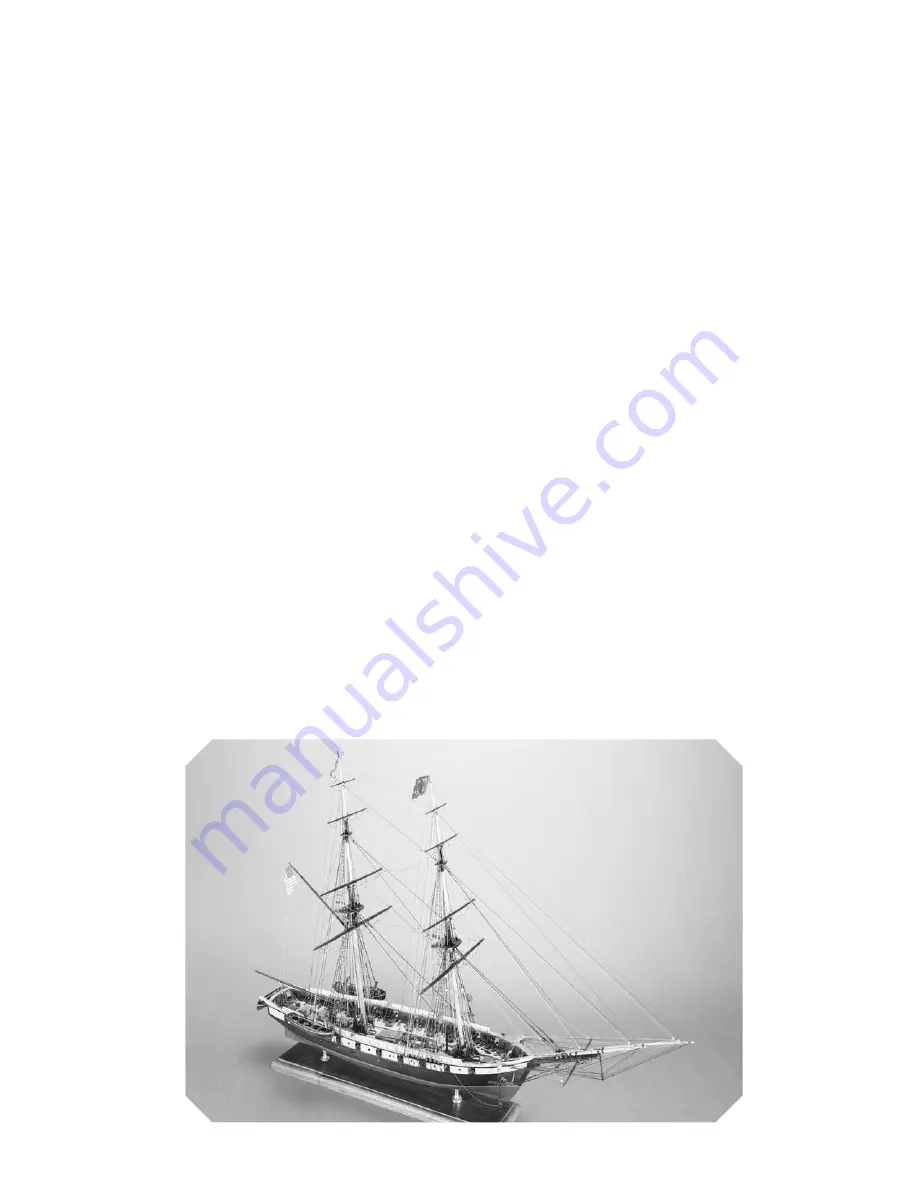
2
The original
Niagara
was Commodore Oliver Hazard Perry's second flagship during the Battle of Lake Erie on
September 10, 1813. His victory over the British secured the Northwest Territory, opened supply lines, and lifted
the nation's morale.
Six ships in Perry's fleet of nine, including
Niagara
, were built in Erie, Pennsylvania. To accomplish the task,
shipwrights, block makers, caulkers, boatbuilders, and laborers were recruited from Pittsburgh, Philadelphia,
and elsewhere. Material was brought in from all over the country.
The Navy assigned ship master Daniel Dobbins of Erie to direct construction until experienced builders arrived.
In February 1813, Noah Brown, a New York shipbuilder, was hired to complete the construction. He also
designed two of the four schooners and the brigs,
Niagara
and
Lawrence
.
On March 27, 1813, Commodore Perry took command of the American naval forces at Lake Erie. When the
famous battle began six months later, Perry was aboard
Lawrence
, his flagship. He was soon engaged in a tremen-
dous battle with the main strength of the British line. However, for more than two hours Commander Jessie
Elliott kept
Niagara
well removed from the action, content to lob shots at his adversary with two 12-pound long
guns. After two-and-three-quarter hours of murderous gunfire,
Lawrence
was "one confused heap of horrid
ruins." Perry gave up his flagship and was rowed to
Niagara
where he continued to attack. Two-and-a-half hours
later, Perry returned to the shattered
Lawrence
, went to his cabin, and penned a quick message to General
Harrison: "We have met the enemy and they are ours — Two Ships, two Brigs, one Schooner and one Sloop."
After the War of 1812,
Niagara
served as a station ship in Erie until 1820. Then she was scuttled in Misery Bay.
For the centennial of the battle, Erie citizens raised the hulk and rebuilt the ship. Another restoration began in
1931, but the Depression slowed progress. The hull was completed in 1943 and masts installed in 1963. By 1988,
Niagara
was again deteriorating. The Pennsylvania Historical and Museum Commission hired Melbourne
Smith, a world-famous naval architect, to redesign the entire ship and direct construction.
Niagara
was
relaunched on the battle's 175th anniversary. Only a few original timbers remain in the hull, and these are used
in non-structural locations. The reconstruction was completed in 1990.
The new
Niagara
hull length is 123 feet with a 32 foot beam. Draft at the stern is 10 feet 3 inches, and she dis-
places 297 tons. The tons burthen (old measure) is 492 60/95 tons. In 1813, the ship carried 155 officers and men,
and was armed with eighteen 32-pounder carronades and two long 12-pounders. Today, 40 professionals and
volunteers man
Niagara
and four replica carronades comprise her ordnance.
Niagara
is operated by the Pennsylvania Historical and Museum Commission, with the assistance of the
Flagship
Niagara
League, a non-profit associate group. The ship sails daily and serves as the Commonwealth's
goodwill ambassador. She is the centerpiece of a new maritime museum in Erie, Pennsylvania.
For more history on
Niagara
and the War of 1812, refer to the bibliography.
HIST
HIST
OR
OR
Y
Y
Photo Courtesy of
Melbourne Smith



































